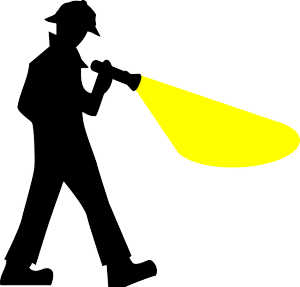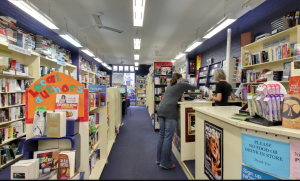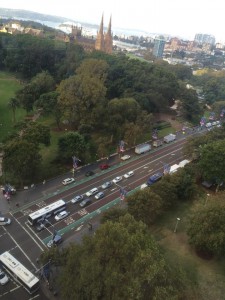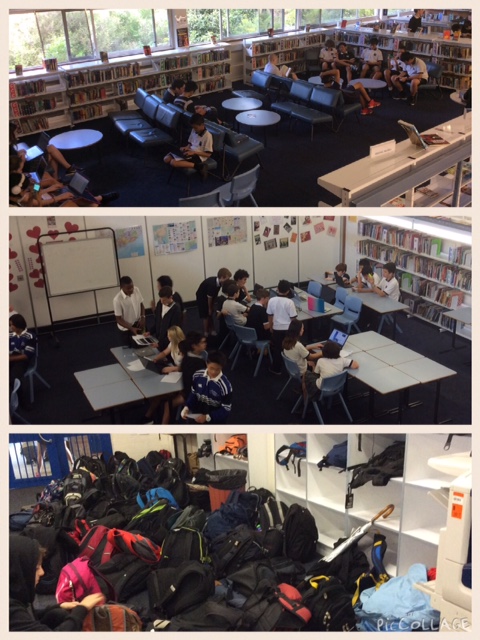
Balmain Library and Knowledge Centre 2015
My challenge here is to achieve a “critical synthesis” and assess my progress in understanding the role of the Teacher Librarian in schools. To be perfectly frank, I don’t know that I am yet capable of fully realising that goal. This course has expanded my view of the role of the Teacher Librarian in schools, increased my knowledge of the expectations and details, but has also found me acquiring scepticism that the role will ever truly be appreciated in schools, and a realisation that the frustration levels involved may yet overwhelm me.
My career as a teacher has already spanned three decades and provided me with experiences in a wide variety of education systems and pedagogical approaches – yet I find myself under pressure to be able to fulfil the TL role. Achieving success at interview and being offered a placement as TL in a NSW DEC school was a significant challenge. I bring to this role an acceptance of the change process, a deep love of literature and information literacy, expertise in the vast array of tools of the 21st Century educator, a background in database management, and training in school leadership… and yet I find myself in a school where the role of the Teacher Librarian has a long, dark shadow and significant baggage, and I wonder if I have sufficient resilience to meet the challenge of realising the potential of the TL role. Thankfully ETL401 has provided some clarity for me but TLs must work within the staffing structure of their school and I am yet to be convinced that it is possible to establish a shift in how other staff perceive the role, or accept a change that allows change.
Since first being offered, by a secondary Principal, an opportunity to act as Teacher Librarian in 2013, and another position in 2014, I have been fortunate indeed to connect and collaborate with a large group of Teacher Librarians serving in a wide range of schools – both in NSW and internationally. I have listened and read about the issues they face – the challenges of advocacy and accreditation, the importance of “Teacher” in TL, the treatment by school executives, the budget constraints, the push for change of usage and design of Library spaces and so on, and I began this course with what I realise now was a chaotic view of the Teacher Librarian profile in schools.
My description of the role as a “Project Manager’s nightmare” (Hogg, 2015a) was an accurate assessment of how I saw the role at the beginning of this semester. Thankfully some clarity has been achieved as the course has progressed, and especially through exposure to and discussion about some of the support literature that provides greater definition of the TL role. The ASLA website and materials have been significantly useful in this pursuit of clarity and their analysis of “What is a teacher librarian?” (Asla.org.au, 2014) has provided me with a framework as a foundation for the development of a Strategic Plan for my new role. What I described as the “ubiquitous and indispensable” (Hogg, 2015a) features of the TL role are in fact examples of critical and creative thinking – two important facets of what the Australian Curriculum describes as General Capabilities of the 21st century (Australian Curriculum and Assessment Reporting Authority [ACARA], 2014) and are a foundation for the role of TL in schools.
This course has also highlighted the importance of the role of the School Principal in achieving a shift in perception amongst teaching staff regarding the use of the Library and the role of the TL. The course forums gave many examples of how Principals and TLs interact in schools. As I noted in my blog post, the literature has shown me that “Supportive principals also communicate an understanding of the value of the library program and make Information Literacy an agenda item in school planning” (Hogg, 2015b) and I recognise that I have much more “collaboration homework” to do (Bush, 2003) in order to achieve a supportive relationship, and the resulting access to teaching staff that can be made available in the collaborative process.
Most importantly, though, I come away from this course with a much more detailed understanding of the importance of Information Literacy – what it looks like and how it can be explicitly taught in schools (Hogg, 2015c). In addition, through the Interact2 forums, completion of assignments, and connection and collaboration with other members of my MEd(TL) student cohort (especially through connecting via Facebook) – I have come to understand the importance of the Information Literacy models and the process of inquiry, and look forward to creating opportunities for students at my school to improve their Information Literacy and be better prepared for the challenges of lifelong learning in this information dense landscape of the 21st Century.
Information literate students, who are learning how to learn and using a 21st Century skill set, should be the focus of the TL role. Teacher Librarians have a pivotal role in teaching their students how to broaden their literacy horizons and love of literature, how to have a passion for learning and how to the acquire the metacognitive processes involved – constructivism in action. Essentially this means that TLs are teaching students to access, process, organise, create, and present their learning in meaningful, purposeful ways (Abilock, 2004). For me the fog has cleared and the challenge is revealed – I will continue to learn how to adapt and change as my participation in the role of Teacher Librarian focuses on the students of my school and the learning challenges they face, in a world where success, reading and Information Literacy are inexorably linked.
While I remain sceptical… I will face the hurdles with renewed vigour, now that the challenge has been well articulated.
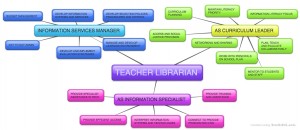
Role of TL
[click image to enlarge]
[Images in this post created by D.Hogg 2015]
References:
Abilock, D. (2004). Building Blocks of Research: Overview of Design, Process and Outcomes. Available at: http://www.noodletools.com/debbie/literacies/information/1over/infolit1.html
ACARA Australian Curriculum, Assessment and Reporting Authority. (2014) Foundation to Year 10 Curriculum [online] Available at: http://www.australiancurriculum.edu.au/
Asla.org.au, (2014). What is a teacher librarian? Available at: http://www.asla.org.au/advocacy/what-is-a-teacher-librarian.aspx
Bush, G. (2003). Do your collaboration homework. Teacher Librarian, 31(1), 15-18.
Hogg, D. (2015a) ETL401 blog task 1 – trying to understand the TL role
[blog post] available at http://thinkspace.csu.edu.au/debhoggoz/2015/03/22/etl401-blog-task-1-trying-to-understand-the-tl-role/
Hogg, D. (2015b) Principal support in a 21C library [blog post] Available at:
http://thinkspace.csu.edu.au/debhoggoz/2015/05/02/principal-support-in-a-21c-library/
Hogg, D. (2015c) Am I information literate? Is information literacy more than a set of skills? [blog post] Available at:
http://thinkspace.csu.edu.au/debhoggoz/2015/04/20/am-i-information-literate-is-information-literacy-more-than-a-set-of-skills/
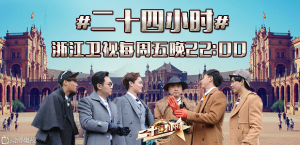
 about humour – sharing jokes and videos – than commentary on daily events or news items like it is in the US… which probably makes sense given the attitude towards free speech in a Communist country. However, the mashups of western video and celebrity watching on Weibo (China’s twitter) looks remarkably similar to the twitter feed of the average western teen.
about humour – sharing jokes and videos – than commentary on daily events or news items like it is in the US… which probably makes sense given the attitude towards free speech in a Communist country. However, the mashups of western video and celebrity watching on Weibo (China’s twitter) looks remarkably similar to the twitter feed of the average western teen.
